AppleInsider is offering a comprehensive roundup of Storm reviews published by well-circulated print publications, in addition some reviews offered by more Web-centric outlets. Readers who are seriously considering a BlackBerry Storm are advised to review each of the reviews, as they all offer unique observations.
Wall Street Journal's Walt Mossberg
- The Storm is essentially a touch-based, large-screen version of the well-polished BlackBerry Bold.
- "When you strike a key or icon on the Storm's screen, you feel a physical sensation, as if you were pressing down on a real key or button."
- The entire glass display is one large button but it doesn't "magically turn the Storm's touch interface and virtual keyboard into their physical counterparts."
- The new screen also replaces the side-mounted scroll wheel or track ball.
- When held vertically, the Storm will only display a "mashed-up keyboard" — not a full keyboard — that has "has multiple letters on each key."
- No Wi-Fi capability.
- While the Storm's keyboard is 7% smaller than the iPhones, it offers about 13% higher resolution. "Photos and videos look beautiful on it."
- Better battery life for phone calls than either the iPhone or the Google G1. Battery is also removable.
- Storm comes with 9GB of memory and is expandable via flash cards.
- Much better camera than the iPhone. 3.2 megapixels compared to 2 megapixels and it does video too.
- Storm also has copy-and-paste, MMS, voice dialing and tethering capabilities.
- Better speaker and noise-canceling microphone than the iPhone.
- It's 5% thicker and 17% heavier than the iPhone.
- Verizon's high-speed network used by the Storm is more robust than AT&T's.
- Some interface tasks, such as photo rotation and panning and zooming in the web browser, are slow.
- No wireless sync.
- "Overall, the Storm is a very capable handheld computer that will appeal to BlackBerry users who have been pining for a touch-controlled device with a larger screen."
- The Storm's click-able screen offers roughly the same sensation you get when clicking a mouse.
- Text messaging is amazing and "just as easy as typing one out on a MacBook's keyboard."
- The 3.2megapixel camera also comes with a flash, unlike the iPhone's.
- "Web surfing on the device is good, not great" and lacks Flash support just like the iPhone.
- "Battery life skews towards the pathetic end of the spectrum. While not as atrocious as the iPhone 3G's, it still ran out of juice after a solid day of use."
- "The hardware that RIM has produced is completely original, wholly impressive, and poised to affect the way every phone manufacturer approaches touch technology — including Apple." [It's the carrier crippling the handset's full potential.]
- The Storm's OS feels like it was rushed, and there are freezing issues.
- "If you're locked into a contract with Verizon, want a touchscreen phone, and are willing to put up with an OS that moves like a tranquilized yak, then yes the Storm is for you. Otherwise, your best bet is an iPhone or the very capable BlackBerry Bold."
- Ultimately, the Storm's touch interface feels like a failed experiment.
- The Storm has a GPS receiver and Bluetooth.
- The Storm's accelerometer lets you use it in landscape or portrait mode for most applications (it orients the phone in portrait mode only, though).
- "Though RIM generally produces first-rate hardware (especially the QWERTY keyboards that it pioneered on handhelds), I found the Storm awkward to use for everyday data entry tasks."
- "I'd tap a menu item, for example, but then when I depressed the screen, the selection would somehow shift and a different item would execute."
- Scrolling was slow, and no quick method to jump to particular contacts.
- "There's no obvious way to make the keyboard go away quickly, either, if you want to see part of the screen that it's concealing."
- "When you enter a number, you press a key to access the numerals— but after each entry, the keyboard returns to the default QWERTY design, so you have to tap twice for each digit you enter."
- Phone call quality is solid. "The Storm maintained calls that the iPhone and AT&T Wireless dropped in the same location, to the same number, at the same time of day."
- Impressive audio quality for music via earbuds.
- "Whereas the iPhone can look dim outdoors, the Storm never did."
- The camera outshines the iPhones due to its built-in flash and auto focus.
- Synching times are somewhat disappointing.
- "But people who were hoping for a credible iPhone alternative fortified with BlackBerry's strengths as a mobile tool for corporate travelers will likely find the Storm a disappointment. When it comes to touch interfaces, Apple still has no peer."
The Chicago Tribune's Eric Benderoff
- Video looks great on the Storm but navigation in general lags.
- "The touch controls on the Storm do not compare with the more responsive iPhone or Google phone."
- Odd placement on on-screen buttons often leads to an improper selection and, hence, backtracking.
- Three different keyboard styles are offered, which is "two too many."
- "The faithful BlackBerry user may be better off with the Bold, another RIM model with multimedia muscle plus two fast network connections."
Additional reviews
In addition to the mainstream reviews listed above, several internet publications have also weighed in on the new BlackBerry Storm.
"The RIM BlackBerry Storm may blow in a frenzy for Verizon Wireless subscribers wanting a touch screen similar to the Apple iPhone. However, die-hard texters, e-mailers, and corporate users may be better served with the BlackBerry Bold or other QWERTY device."
"The Storm is a strong effort from RIM, but it's not quite the killer phone that they or Verizon need it to be. It's good—RIM clearly put a lot of thought into the design. But I think it fall short of what they were aiming for, and ultimately what all the hype is driving people to expect. Some of this is fixable: The damn thing needs to crash less often. But SurePress is not the end-all, be-all of touchscreen technologies—it's not really an evolutionary step forward, even. The experience may be fairly refined, but more polish is still needed. Had this Storm been left to brew a bit longer, it would've been much more powerful."
"Going into this review, we really wanted to love this phone. On paper it sounds like the perfect antidote to our gripes about the iPhone, and in some ways it lives up to those promises — but more often than not while using the Storm, we felt let down or frustrated. Ultimately, this could be a great platform with a little more time in the oven, but right now, it feels undercooked — and that's not enough for us."
 AppleInsider Staff
AppleInsider Staff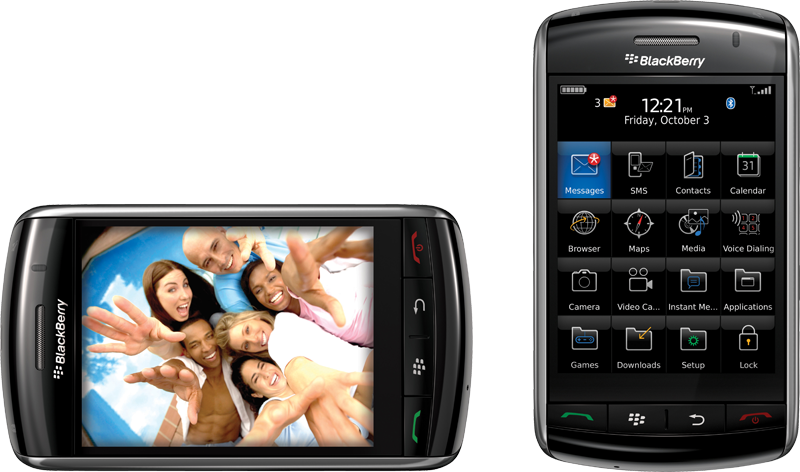




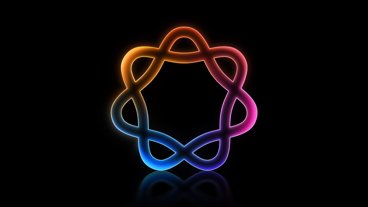


-m.jpg)





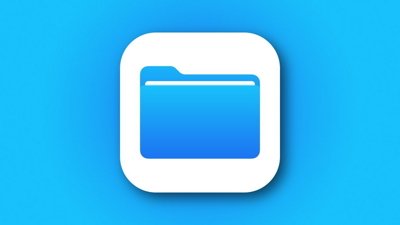
 Andrew Orr
Andrew Orr
 Malcolm Owen
Malcolm Owen
 William Gallagher
William Gallagher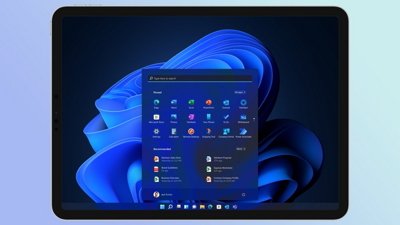
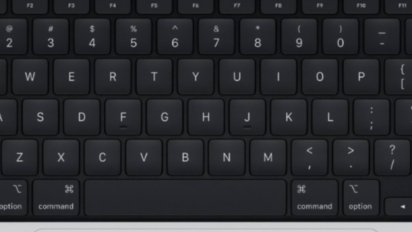
 Wesley Hilliard
Wesley Hilliard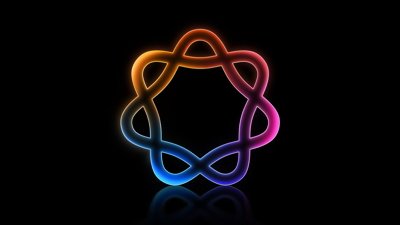
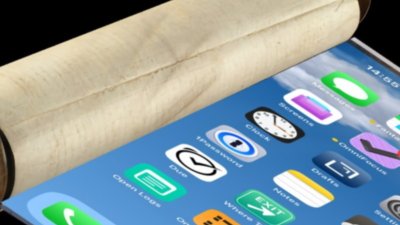


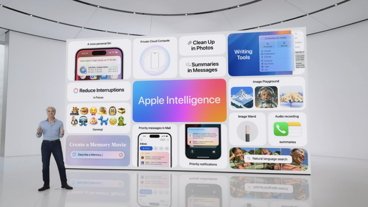


-m.jpg)




44 Comments
ok.
hmmm....
And just like other RIM phones -- there is no out-of-the-box Mac support for syncing. Can't wait to hear about people's experiences -- since the ATT Bold has proven to be a Mac sync nightmare and might not have a viable mac sync solution until sometime in 1st quarter 2009...
Imitation is the sincerest form of mediocrity.
I always wondered why Apple did not incorporate the vibrating layer to simulate a pressed key. It might be because it'll make the iPhone a little thicker or maybe because of the glass screen.
This is a big step for BlackBerry, and unlike Apple, they were obviously listening to the iPhone crowd who were complaining about no video camera, copy paste, SMS, tethering, or voice dialing.
I really like the fact that the camera has auto focus, but I'm not sure about the quality of its 3.2mpixel camera, it probably sucks as much as the iPhone and the G1.
The battery life is an unfair comparison because the BalckBerry lacks WiFi. The iPhone's battery lasts a lot longer if that feature is turned off when its not needed.
Conclusion: iPhone is still king in many ways, but Apple is frustrating many of its users by giving them lots of wants and not taking their needs seriously.
Like a tranquilized yak.... awesome.